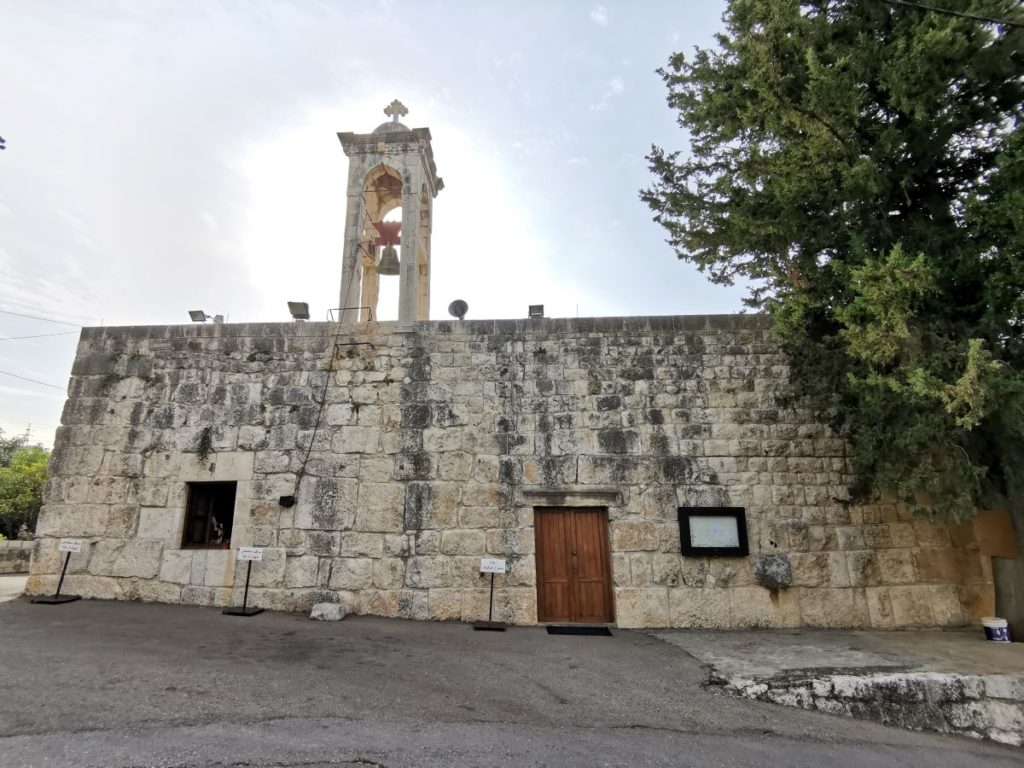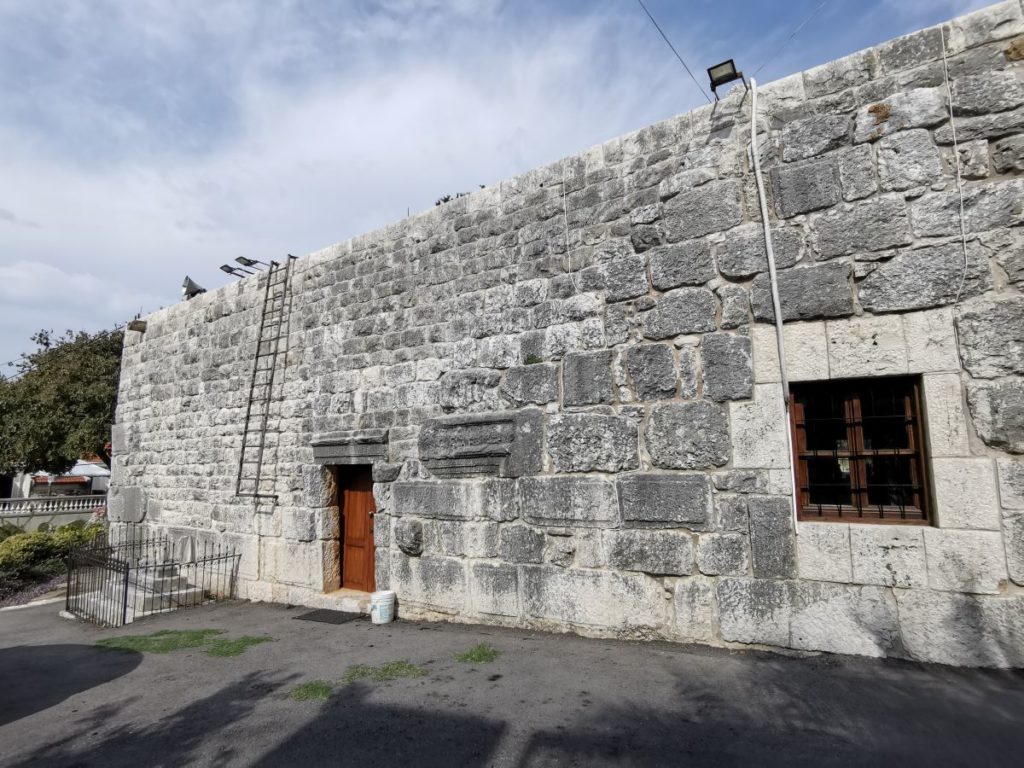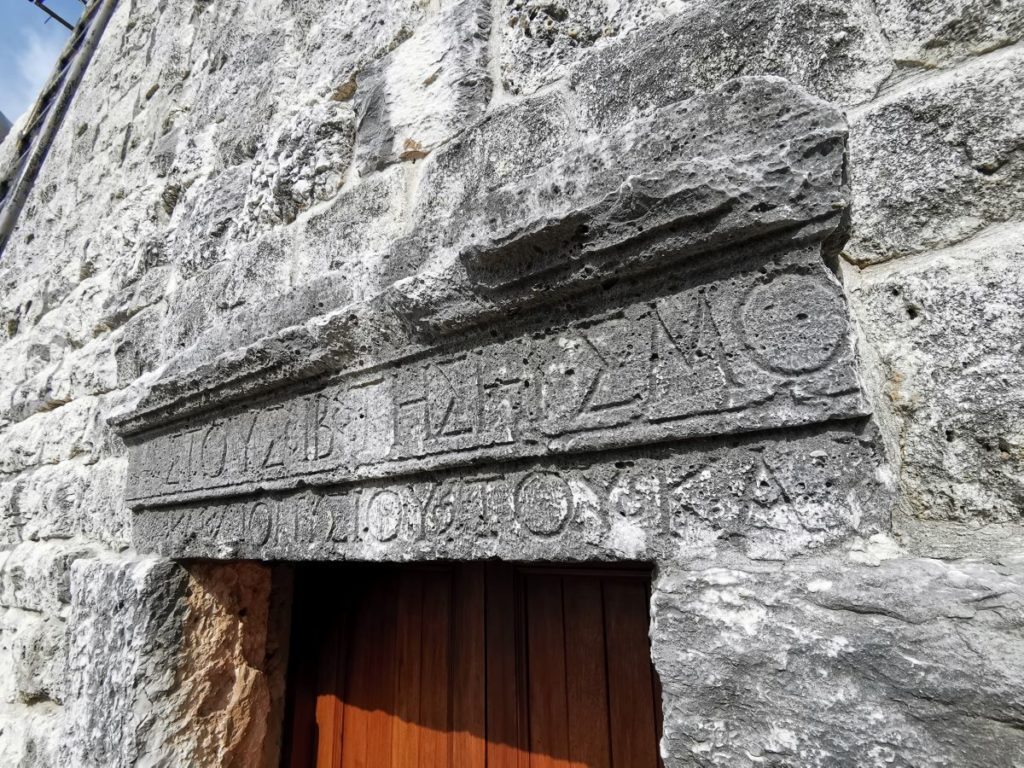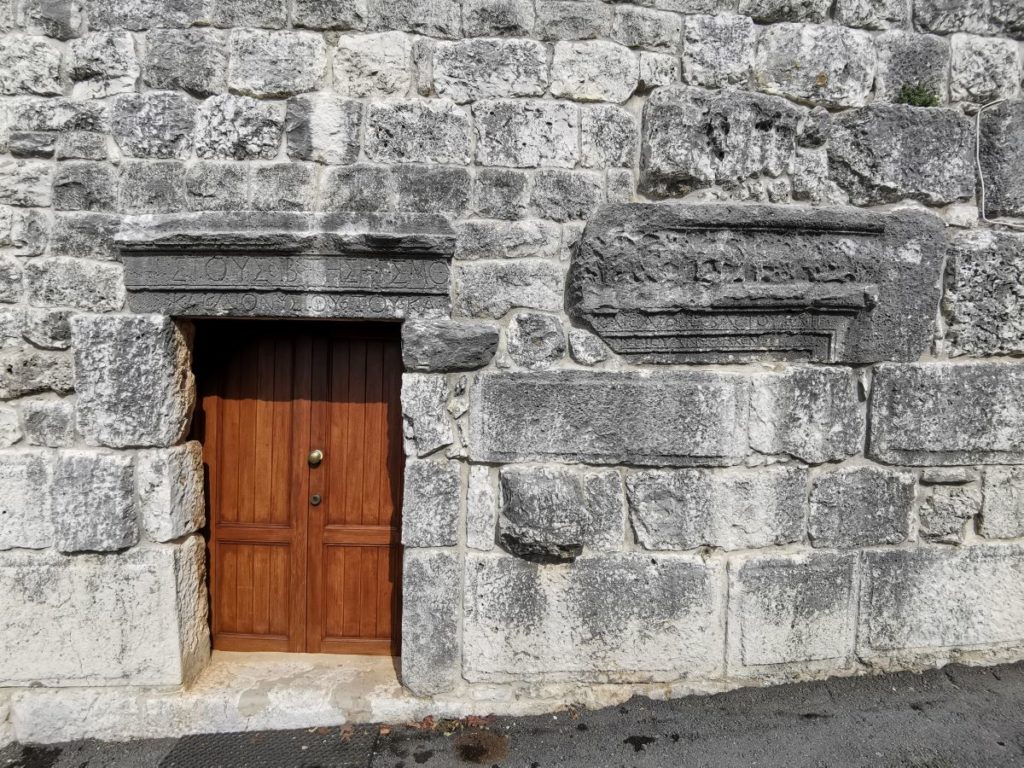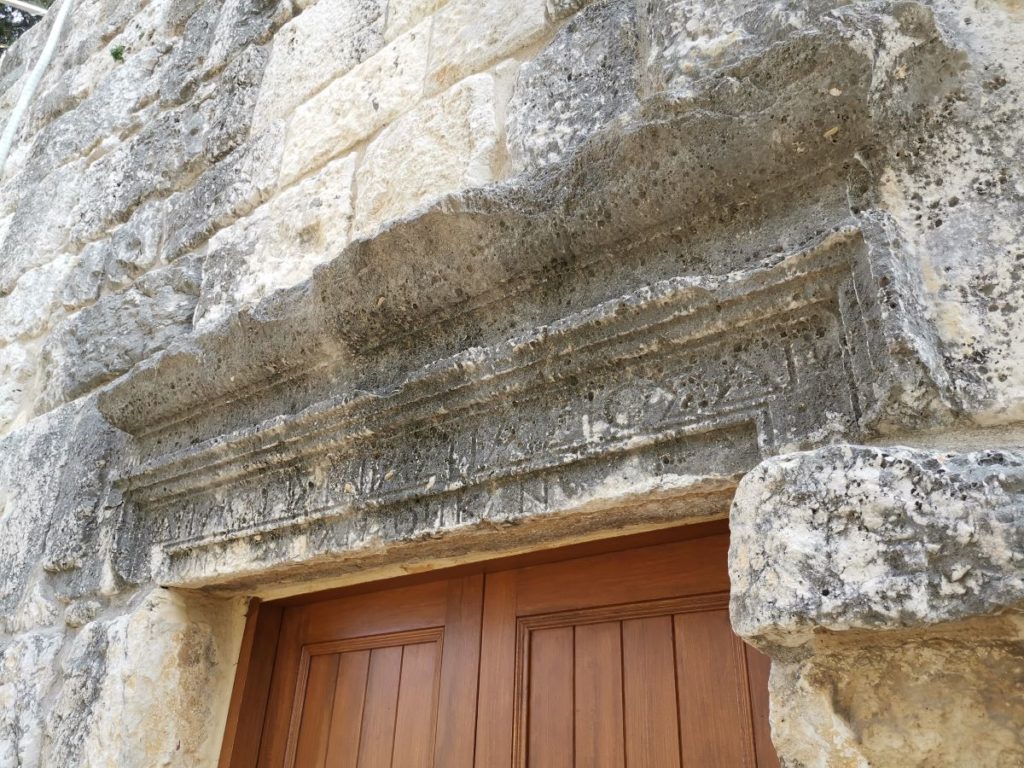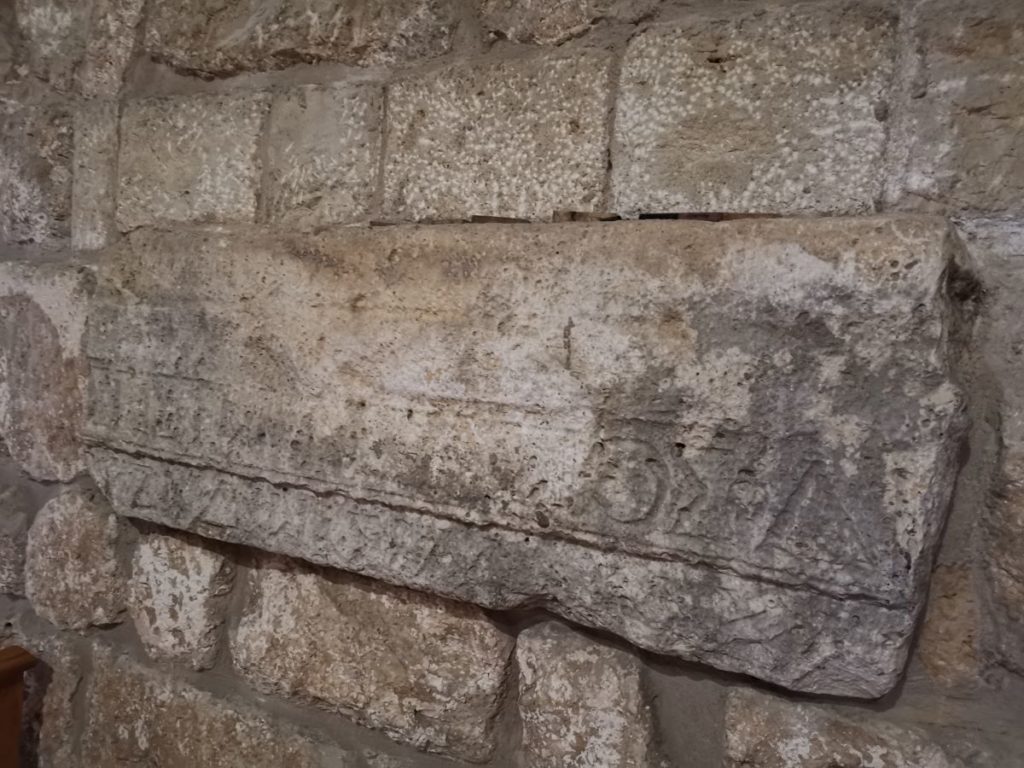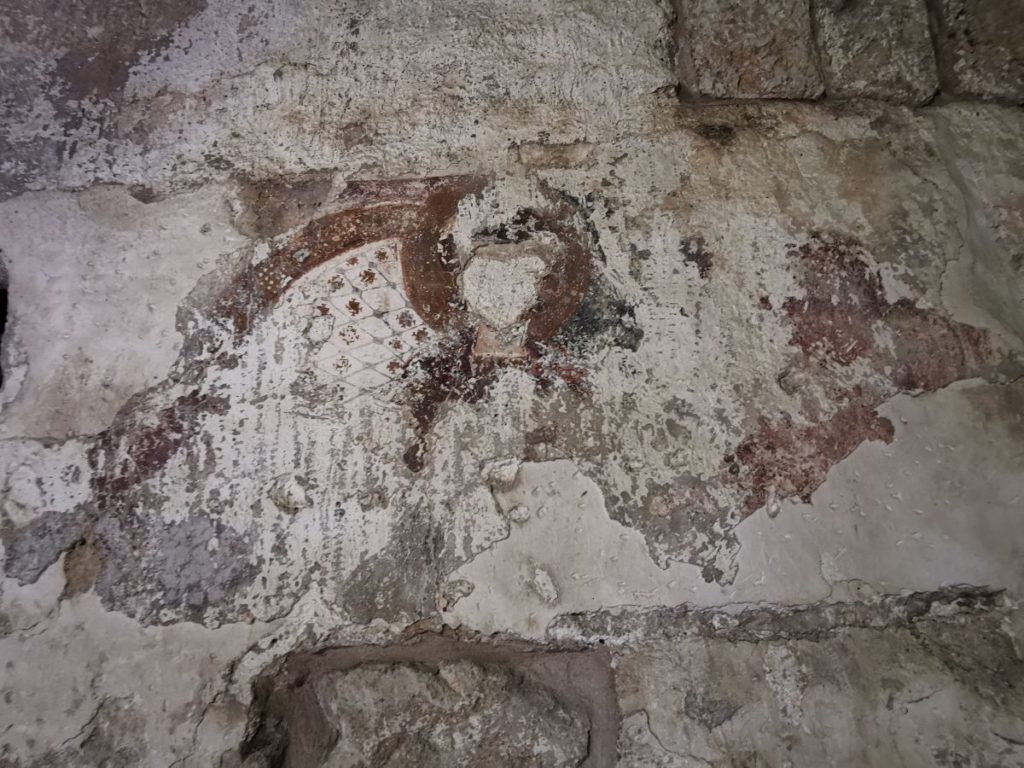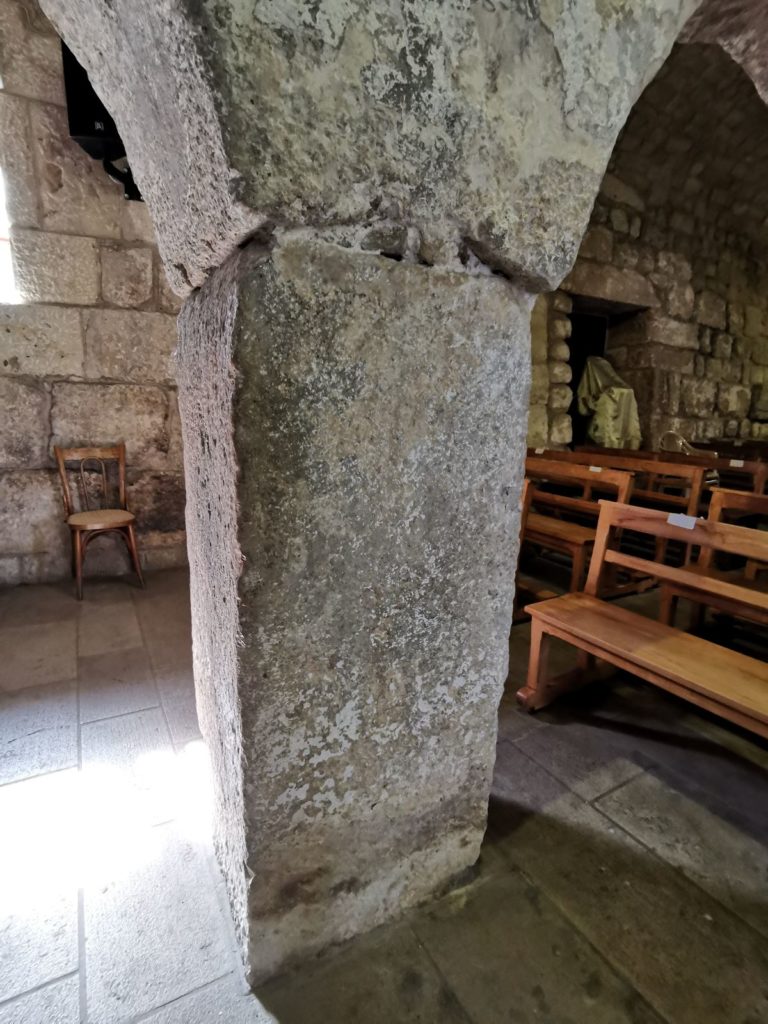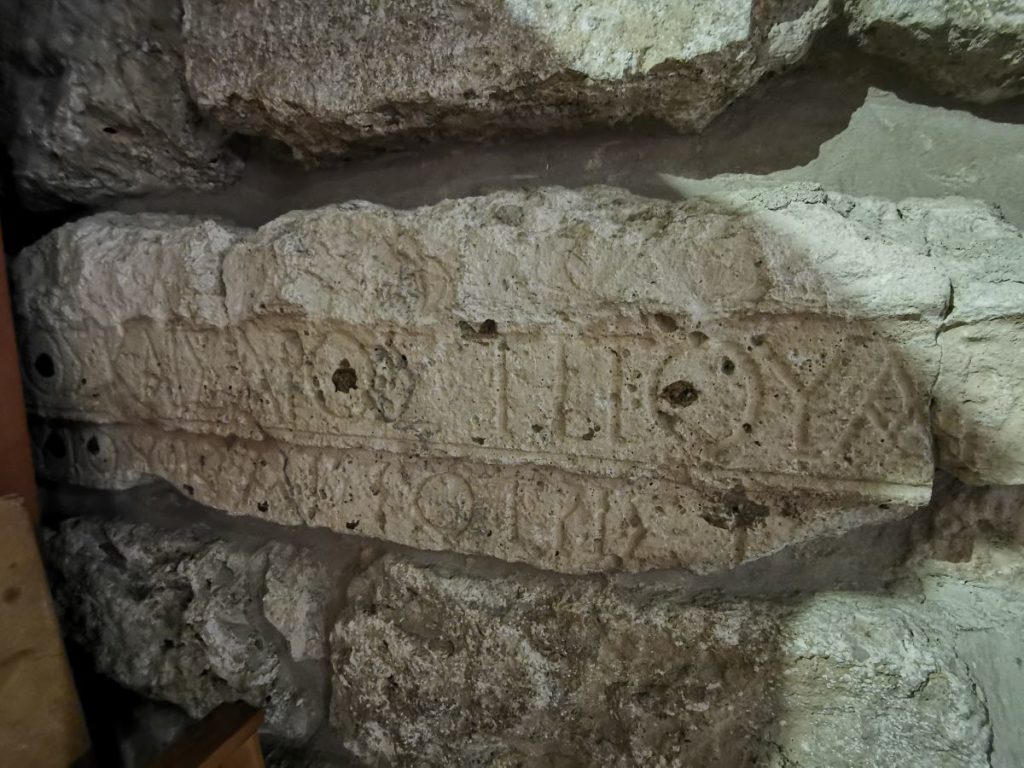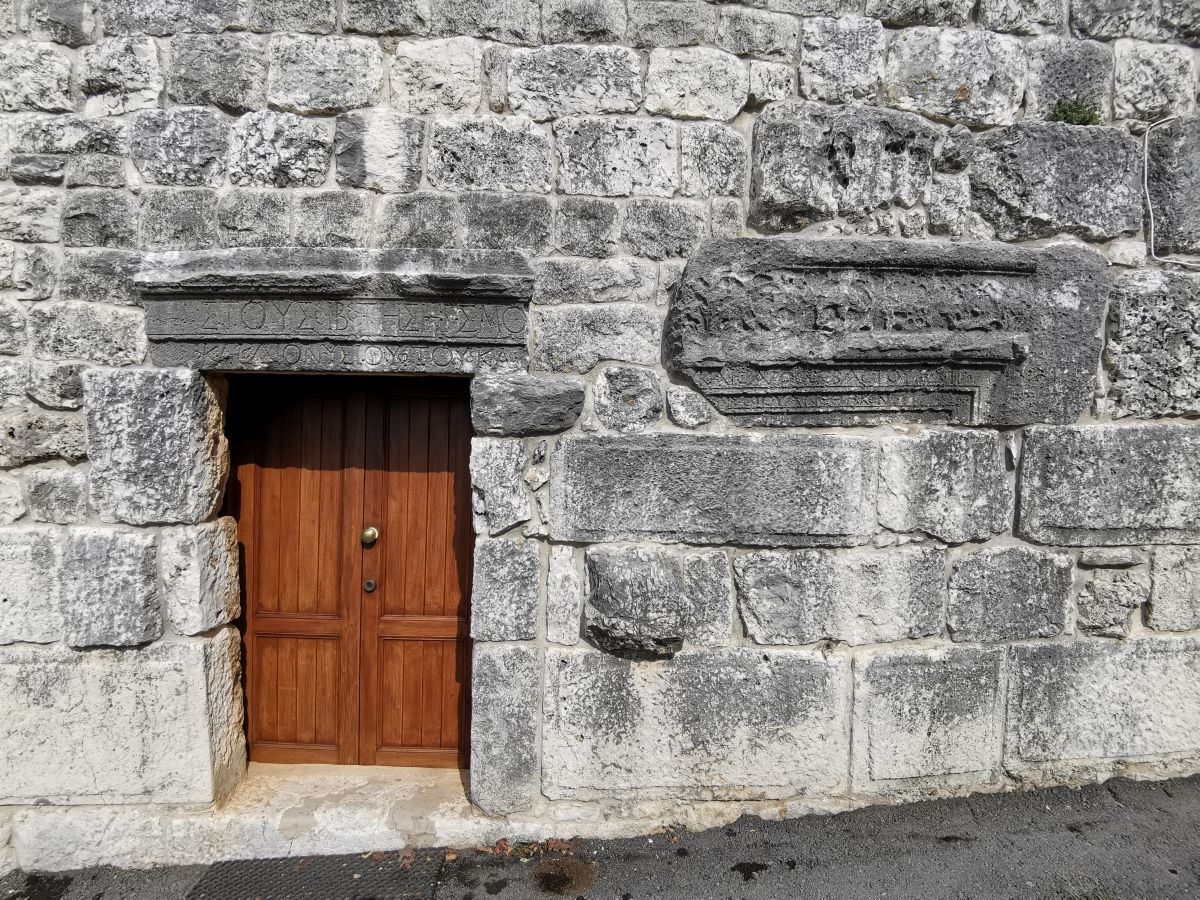The Church of St. Elias, located in Blat, was built on the site of a former Roman temple, dedicated to the Greek God Zeus, and was restored in 1970 by the General Directory of Antiquity.
The church is unique for 3 main elements, 1-) It’s structure material, 2-) its frescoes and 3-) its inscriptions and their epigraphic value.
Structure
The Saint-Elie church is rectangular in shape, and has four masonry blocks, each measuring approximately 2.20m long. It has three portals: north, south and west. Above the north and west portals there are two complete lintels of equal width.
The church is distinguished by its three naves separated by two arches whose pillars come from the former Roman temple.
The church bears unique frescoes waiting to be restored. The frescoes are visible in small parts around the church.
At the western side of the church, one can find a statue that was discovered during the restoration of the church. The statue seems to have been erected at the entrance of the former Roman temple.
Inscriptions
4 inscriptions indicate that the initial structure, a temple, was built in 148 – 149 AD by Aspasios son of Dionysios, a faithful from the notables of Byblos.
The lintel of the western door façade is engraved with the following inscription: To the holy Zeus, Aspasios son of Dionysios had this temple erected. The lintel of the southern door façade also bears an inscription dedicated to Zeus, as well as a frieze decorated with acanthus leaves and foliage.
Importance
This attraction presents how a pagan temple was transformed into a Christian church through alternation of the architectural plan of the building, and the blend of the structural elements, and decoration.
Scroll down to enjoy the pictures and to locate the site on the map.
Karim Sokhn
Tour Operator & Tour Guide
References:
Les Sentiers de la Foi, Mariam G. Matta
La Vie Religieuse Au Liban Sous L’Empire Romain – Julien Aliquo
